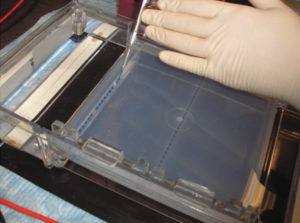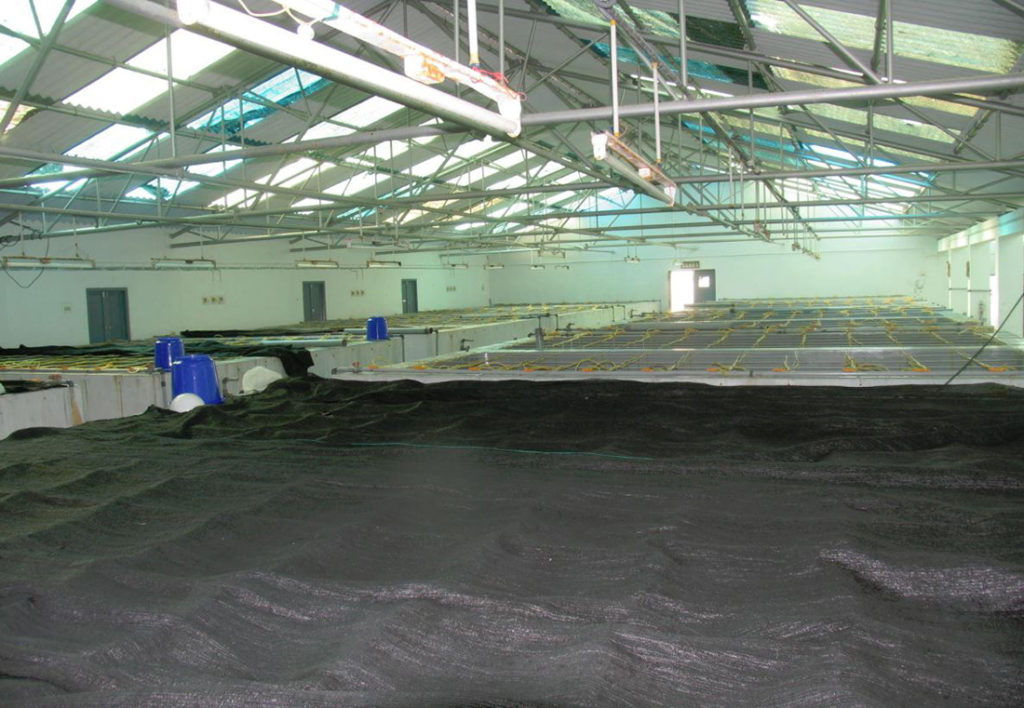A one-step assay detected all geographical isolates

White spot syndrome (WSS) was first documented as a viral disease in 1993 in Asia and rapidly spread throughout that continent. By 1995, the virus had spread to the Western Hemisphere, decimating shrimp pond productions. After 15 years, WSS remains a major impediment to the shrimp culture industry worldwide.
White spot disease has been listed as a notifiable disease in the Office of International Epizootic (OIE) Aquatic Animal Health Code since 1997. The two-step polymerase chain reaction (PCR) protocol in the OIE Manual of Diagnostic Tests for Aquatic Animals is considered the reference standard for detection of the white spot syndrome virus (WSSV) by PCR.
Two inherent drawbacks to the recommended procedure are a lack of specificity, primarily due to a low annealing temperature, and the possibility of introducing contamination during the second step, which can result in false positive samples that ultimately mean the destruction of shrimp stocks.
Procedure development
With grant support from the U.S. Consortium Marine Shrimp Farming Program, National Institute of Food and Agriculture, the authors developed a simplified PCR test to detect virus WSSV. The second-step primer pair used in the OIE WSSV PCR test, which amplifies a 942-bp product, was selected for development of the one-step procedure.
The cycling times of the three steps of the PCR amplification process – denaturation, annealing and extension – were reduced to 20, 20 and 30 seconds, respectively, which allowed the assay to be run in less than 1.5 hours. The annealing temperature was raised to 62 degrees-C to increase specificity.
Sensitivity, specificity
The sensitivity of the one-step assay was determined using semi-purified WSSV in which the viral copy number was determined using real-time PCR (Table 1). Both the OIE-recommended two-step and the one-step methods were compared. The two-step assay limit of detection was 1.2 copies following the second-step round of amplification. The one-step method achieved the same level of sensitivity to 1.2 copies of WSSV.
Nunan, Real-time PCR quantification, Table 1
| Theoretical Copy Number | Real-Time Copy Number (mean of 3 duplicates) |
|---|---|
| 1,000 | 2,858.0 |
| 100 | 276.0 |
| 10 | 28.0 |
| 1 | 1.2 |
| 0 | 0.4 |
The specificity of the assay was tested using a variety of WSSV-infected shrimp samples from various geographical locations in the Americas and Asia, and the same primer pair used in the two-step OIE protocol. The one-step assay detected all of the geographical isolates.
Advantages
The one-step PCR protocol is less expensive to run than the two-step procedure. The amount of time required for the assay is 1.5 hours as compared to seven hours for the two-step method. In addition, the possibility of cross-contamination is reduced substantially using the one-step PCR method.
After 15 years, due to the many improvements in PCR technology, two-step PCR for the detection of WSSV could be replaced with a simpler, more rapid and equally sensitive method based on the second-step of the recommended WSSV OIE PCR protocol. This method could provide an alternative to that protocol as a recommended procedure in the next edition of the OIE manual.
(Editor’s Note: This article was originally published in the January/February 2011 print edition of the Global Aquaculture Advocate.)
Authors
-
Linda M. Nunan
University of Arizona
Department of Veterinary Science and Microbiology
Aquaculture Pathology Laboratory
Tucson, Arizona 85721 USA[117,100,101,46,97,110,111,122,105,114,97,46,108,105,97,109,101,64,110,109,108]
-

Donald V. Lightner, Ph.D.
University of Arizona
Aquaculture Pathology Laboratory
Tucson, Arizona 85721 USA
Tagged With
Related Posts

Health & Welfare
A comprehensive look at the Proficiency Test for farmed shrimp
The University of Arizona Aquaculture Pathology Laboratory has carried out the Proficiency Test (PT) since 2005, with 300-plus diagnostic laboratories participating while improving their capabilities in the diagnosis of several shrimp pathogens.

Health & Welfare
A holistic management approach to EMS
Early Mortality Syndrome has devastated farmed shrimp in Asia and Latin America. With better understanding of the pathogen and the development and improvement of novel strategies, shrimp farmers are now able to better manage the disease.

Health & Welfare
A study of Zoea-2 Syndrome in hatcheries in India, part 1
Indian shrimp hatcheries have experienced larval mortality in the zoea-2 stage, with molt deterioration and resulting in heavy mortality. Authors investigated the problem holistically.

Health & Welfare
A study of Zoea-2 Syndrome in hatcheries in India, part 3
In this third and final part, authors present recommendations to help reduce the incidence of Zoea-2 Syndrome, which is not caused by any known infectious agents in P. vannamei hatcheries in India.


